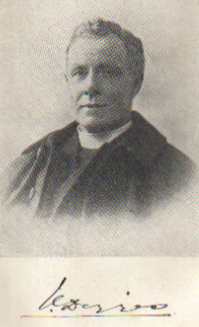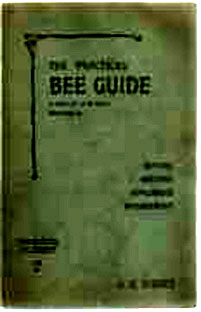

History of Mohill Agricultural Show
To read about the first Mohill Agricultural, please click here.
To see a List of exhibitors at the first show, please click here.
To see a picture from the 1930 Agricultural show, please click here.
To see a poster from the 1899 Lough Rynn and Industrial Show, please click here.
Father of Irish Beekeeping – Mohill Connections
The Beekeepers from Mohill and the surrounding area had the privilege of naming their Group the Digges & District Beekeeping Association after Rev. Joseph Garvan Digges who is considered to be the Father of Irish Beekeeping . Rev. Digges was private Chaplain to the Clements Family – Earls of Leitrim at their Lough Rynn Estate, Mohill and served at Farnaught and Mohill Churches. His book, first published in 1904, “The Irish Bee Guide” is regarded as the standard book of beekeeping in Ireland and the best of the general guides to beekeeping published in the British Isles. The book was later renamed “The Practical Bee Guide – A Manual of Modern Beekeeping” and was based on his work and research on beekeeping carried out at his Rectory at Clooncahir , Mohill.
 |
 |
Rev Joseph .G. Digges lived at Clooncahir, Mohill. He is regarded as the father of Irish Beekeeping.
Modern Irish beekeeping owes much to a local man, the Reverend Joseph Robert Garven Digges, who although born in Dublin, he spent much of his life in Mohill, Co. Leitrim. Educated at the High School of Erasmus Smith in Harcourt St., Dublin, he later entered Trinity College as a pensioner in 1879, being awarded the degree of B.A.(Resp.) in 1882 and in 1885 an M.A. Ordained in 1883, he became Deacon in Kilmore, Co. Cavan, and then Curate in Mohill until 1884 and then 1884-5 at St. George's, High St., Belfast. In 1885, he became the private chaplain to the Clements family (the Earls of Leitrim) at their Lough Rynn Estate at Mohill. He served Farnaught and Mohill Churches and from 1933 the parish of Cloone.
The Reverend Digges had his first bee-keeping lesson in 1885, at Clooncahir, Mohill and thereafter was hooked. He joined the Irish Beekeepers Association and was Chairman from 1910 to 1921. He was Editor of the Irish Bee Journal, (from 1912 called The Beekeeper's Gazette) published from May 1901 to October 1933. In the 33 years of publication, he only missed 4 issues - the May 1916 issue was blown up on the way to the printers during the Easter rising of that year.
Becoming proficient in bee-keeping, and anxious to promote the method of removing the honey crop from the hive without killing the bees, by using moveable frames, he started travelling extensively throughout Ireland on behalf of the Department of Agriculture and Technical Instruction, attending agricultural shows and lecturing. He promoted the "Congested Districts Hive", Designed to be made and used in the poorer areas of Ireland to provide an income where the land was poor.
A great believer in promoting local industry, he helped to found the local co-operative creamery and the bank in Mohill, and was a director of the Cavan & Leitrim railway and also of the Arigna mines. Rev. Digges "was to earn high repute as a first class trouble shooter" (Flanagan, "The Cavan & Leitrim Railway" 1966) and was always sent in when problems arose.
He also published a book: The Irish Bee Guide, later renamed The Practical Bee Guide. A Manual of Modern Beekeeping, a book which came to be regarded as the standard book of bee keeping in Ireland. The book went through many revisions and reprints following its initial publication in 1904. It was self published in 1904 (by Lough Rynn Press), by the 4th edition in 1918, the publishers were Simpkin Marshall Hamilton Kent & Co. Ltd. London - later it was published by Talbot press, Dublin until its 16th edition in 1950. It sold 76,000 copies.
The book was republished in 2004 to celebrate its centenary of publication.
He died dramatically during a confirmation service in Farnaught Church in 1933 and is buried in Mount Jerome Cemetery in Dublin, beside his wife who had died in 1926. He had married Edith Bate in Belfast in 1885 and they had a son and daughter, spending their life in great comfort in the beautiful rectory at Clooncahir, Mohill.
A splendid stained-glass memorial window by Ethel Rhind (1877-1952) was placed in the Farnaught Church, which shows St. McDomnoc (Molagga) bringing the bees to Ireland.
This text is based on an article by Petra Coffey and email of Jim Ryan